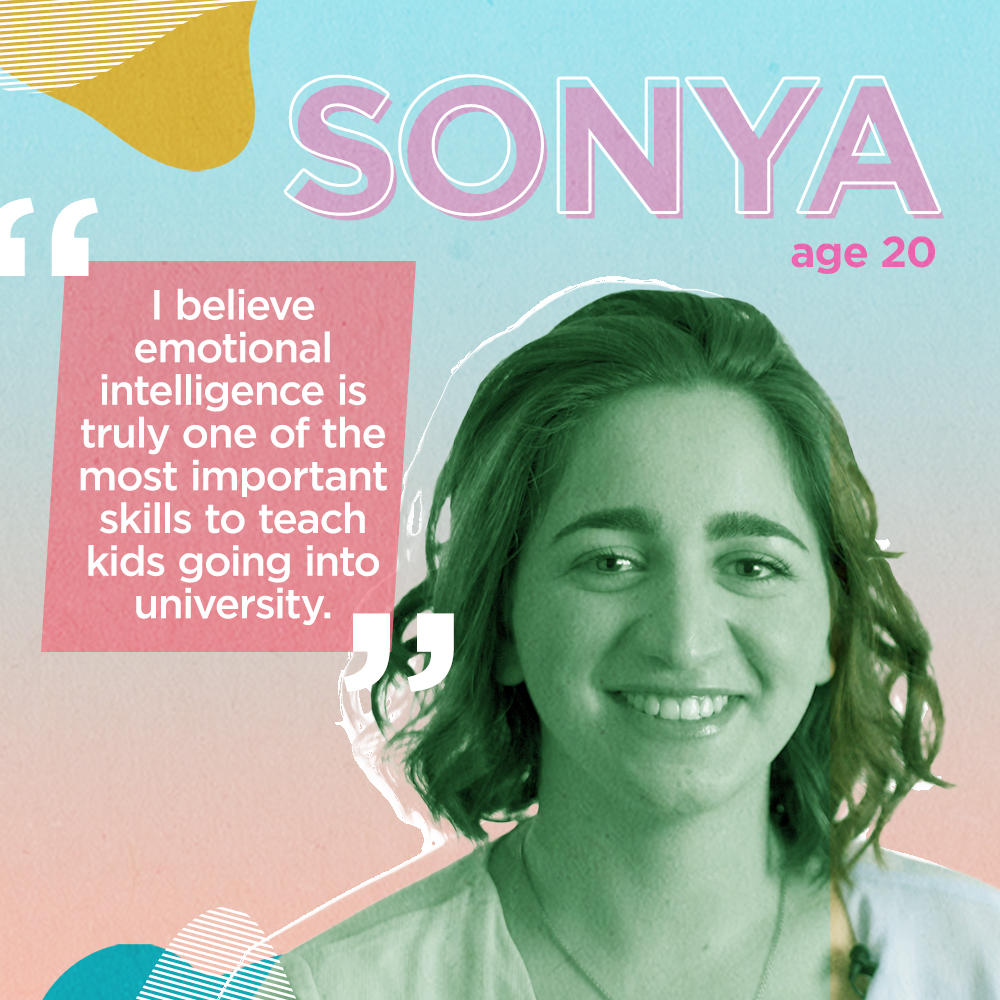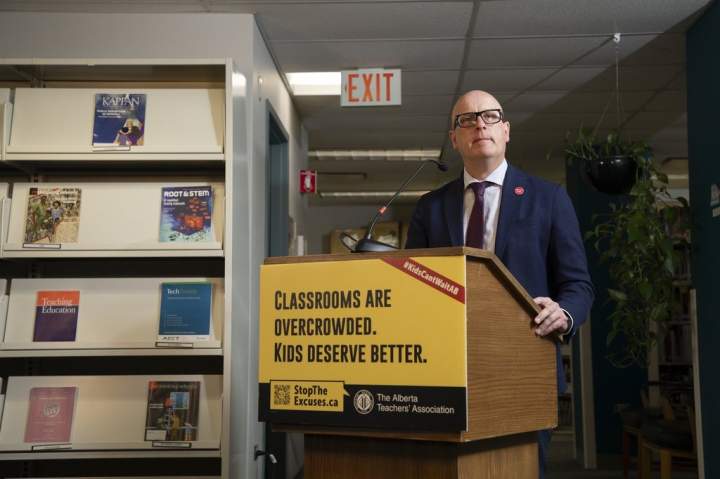
When Ellie needed help from a university campus counsellor, she got up extra early so she could get to the office when it opened at 8:30 a.m.
The 24-year-old, whose name has been changed for privacy reasons, is a pharmacy student at the University of British Columbia (UBC).
Ellie struggles with depression and anxiety, and her conditions were getting worse. Her university’s counselling office has limited appointments available for students, and they are on a first come, first served basis.
READ MORE: ‘Failure to Launch kids’ — Canadian students aren’t prepared for adulthood
Because of demand, these drop-in sessions book up quickly — often an hour or two after the office opens. Going in for an appointment meant she would have to skip her morning class.
Missing class made her even more anxious.
Since it was Ellie’s first time at the centre, she needed a triage appointment to determine the urgency of her needs.
“I waited and waited in the office for a couple hours until I finally got to see someone,” Ellie said.
“And then I was told that I had to wait eight weeks for an appointment with a counsellor. This was incredibly devastating.”
Ellie’s depression had worsened, and it took a lot of effort to ask for help. Being told she’d have to wait two months by a triage adviser before a counselling session was incredibly discouraging.
“I had just spent my whole morning telling someone how awful I had been feeling, and all they could tell me was that I had to wait even longer for help,” she said.
Why it’s so common for mental health issues to develop at school
Post-secondary students across Canada often face the same problem: they need mental health services, but schools don’t have enough resources to meet the demand.
Services are failing to catch up, and in the meantime, students are left in the lurch.
The number of students on college and university campuses with identified mental health conditions “has more than doubled over the past five years,” according to the council group Ontario’s Universities.

More students are anxious and depressed, too, the council found: 65 per cent of those surveyed reported “overwhelming anxiety” in 2016, up from 58 per cent in 2013. When it came to depression, 46 per cent said they were “too depressed to fully function” — a six per cent increase from three years prior.
The majority of people experience their first mental health issue between the ages of 15 and 25, said Tania DaSilva, a child, youth and family therapist at Toronto-based Behaviour Matters. That’s the same age range during which people usually enter or are in post-secondary institutions.
If a student enters post-secondary with an existing mental health condition, support is vital to their academic success, DaSilva said.
“There’s so many things that go into mental health, and for every child or teen, it’s different,” she said.
“They’re transitioning from childhood into adult life, and that’s something that kids struggle with a lot.”
The onset of 75 per cent of mental health disorders happens before 25, according to Ontario’s Universities. These mental health issues include anxiety, depression, bipolar disorder, schizophrenia and suicidal ideation.
READ MORE: Canadian school counsellors are spread thin — and it’s our students that suffer
Then there’s the pressure of post-secondary school itself: multiple looming deadlines, social issues and homesickness, DaSilva said. All of this can affect mental well-being — especially if a student doesn’t have strong coping skills.
For women in particular, sexual assault on campus is another concern. One in five women experiences sexual assault while attending a post-secondary institution, according to a 2015 report by the Canadian Federation of Students.
Sexual violence can have psychological, emotional and physical effects on a survivor, according to the anti-sexual violence organization Rape, Abuse & Incest National Network. This can include depression, flashbacks, post-traumatic stress disorder and self-harm. Proper support is needed to help deal with these effects, the organization says.
Not enough campus resources
In September, a student at the University of Toronto (U of T) died by apparent suicide in the school’s main computer science building, the Bahen Centre for Information Technology. (The university did not use the term “suicide” in reference to the student’s death, but the union representing academic workers at U of T has.)
Sadly, the student was not the first to die at Bahen.
At least two other students died by suicide in the same computer science building: one student died in March, while another died in June 2018.
Their suicides prompted a student-led protest in March decrying what they called a mental health crisis. Students cited long waiting lists and limited options for campus mental health services, a situation the university acknowledged needs to be addressed.
Mental health “services and supports are provided in a number of ways through a number of offices,” a spokesperson for U of T said in a statement to Global News in response to the issue of student suicides.
“We have been consistently putting more resources into this over the past several years and have worked with community partners to provide additional services,” Sandy Welsh, vice-provost of students at U of T, said in the statement.
The university spent an addition $1.3 million on wellness counsellors during the 2017-18 school year, Welsh said. In the 2018-19 academic year, $1.5 million was put towards having accessibility advisers within programs “in response to the growth in students seeking mental health accommodations.”
Why students have a hard time even getting in the door
Ellie’s experience with UBC’s counselling services was frustrating. She says the school’s model does not help students in a timely manner and can even make them feel like they’re being turned away.
“In most school settings you get to see a counsellor, but you’re not seeing them weekly or regularly because there’s just such a high population of people that also need the services.”
“Schools don’t have the capacity to support in the way most of the kids need.”
UBC’s counselling model includes 45-minute drop-in sessions and 15- to 20-minute “wellness advising” appointments.
READ MORE: University isn’t ‘better’ than college. Why does it get all the glory?
The school has other resources on top of counselling appointments, says Cheryl Washburn, director of counselling services at UBC, including workshops, online and telephone support services and peer support groups.
The goal of UBC’s “integrated” care system, Washburn says, is to provide students with services in a timely and effective manner — not discourage them from getting help.
“One of the things that we’ve come to be aware of over time… is that one size doesn’t fit all,” Washburn said.
“Students really do need different types of resources depending on the level of concern, the nature of the concern and also depending upon their specific goals and other circumstances that might impact access to one service or another, as well as their readiness to engage and at what level.”
Last year, UBC provided 28,000 mental health appointments to its Vancouver students, said a spokesperson for the school, including visits with physicians, counsellors, mental health nurses and psychiatrists.
An additional 4,669 appointments were provided through Empower Me, an online and telephone service that connects students with off-campus professionals.

UBC’s Vancouver campus had nearly 55,000 enrolled students in its 2018-19 academic year.
When it comes to stories of students waiting months to see a counsellor, Washburn acknowledges there is still work to do. But she maintains that eight weeks — the time Ellie said she was given — is not typical. Up to three to four weeks is more likely during busy periods, she said.
If a student is told there’s a wait to see a university counsellor, Washburn says they are reminded they have access outside therapists, too. Students have benefits that include a limited amount of money for professional services, she said, which can be used for counselling.
But long wait times are only one of the barriers students face.
Part of the reason Sonya Sevadjian, 20, says she left the University of Waterloo was its hard-to-navigate support services. When Sevadjian was a student at the school from 2016 to 2017, she was struggling with the demands of university and needed help.
Sevadjian said it was challenging to find out what student services Waterloo offered and how to access them. She felt like she was left on her own to figure out the system.
In a statement sent to Global News, a spokesperson for the university said the school has recently revised its services.
“Following an extensive review of student mental health services on campus in 2017-18, we learned that there was more we could do to ensure students were aware of mental health services available to them on campus and how to access them,” said Matthew Grant, the director of media relations at the University of Waterloo.
“The review, which resulted in 36 recommendations overall, resulted in increased services, more training for faculty and staff, and increased communications efforts to students to advise them of the services available and how to access them. Currently, the University of Waterloo has more than 70 professionals — including counsellors, psychiatrists, mental health nurses and intake workers — who can assist students with mental health concerns.”
Sevadjian eventually decided to transfer to Ryerson University in downtown Toronto. She hasn’t used any of Ryerson’s mental health services yet but said the school’s student services are more clearly advertised. This alone makes her feel better about the pressures of being in school.
There were approximately 36,000 students enrolled at Ryerson last year, and the school’s Centre for Student Development and Counselling (CSDC) supported 2,253 of them with on-campus mental health and counselling services, a spokesperson for Ryerson told Global News.
The CSDC currently has 18 counsellors on staff, up from 15 in 2017.
“The wait for ongoing therapy depends on student needs and can be from a few weeks to a few months,” the spokesperson said.
Numbers can also look similar at Canadian colleges. In the last academic year, Humber College — one of the largest community colleges in Ontario — had a total of 4,250 counsellor visits on campus, along with 1,500 mental health nurse visits, according to a spokesperson.
This year, the college is also offering psychiatry services for students.
For Interpreet Gill, a positive experience with campus mental health services benefited her well-being.
Gill went to Queen’s University from 2010 to 2016, and in her third year of her studies, she accessed counselling services. Gill knew Queen’s counselling office sometimes had wait times — which are roughly anywhere from two to six weeks — but was also aware there were emergency mental health services for high-need students.
The psychology student was able to book an appointment with a counsellor fairly quickly.

Nearly 3,000 students accessed counselling services during the last academic year, a spokesperson for the school told Global News — that’s roughly eight per cent of the total full-time student population.
There’s one counsellor or psychologist for every 1,225 students, and one mental health provider, such as a psychiatrist, for every 950 students.
Queen’s acknowledged that wait times for mental health appointments have been a “chronic issue” despite annual increases in resources.
“This is a sector-wide issue,” a spokesperson for the university said.
Still, Gill managed to see her Queen’s campus counsellor once every few months to check in. It was up to Gill, to schedule those appointments, but the sessions did help.
“I couldn’t see her every week just because of the regulations and the policies that they had,” Gill explained, “but I could see her every now and then, which was nice.”
What helps students?
Having a strong support system is vital for students, DaSilva said — especially if they have a recognized mental health condition.
If a student has a therapist they’ve been seeing before going off to college or university, continuing sessions via Skype or FaceTime is a way to help ensure any issues are being addressed, DaSilva said.
There are also ways students can put protective measures in place should they need help. Talking to academic advisers early on about accommodations can be useful, as can orienting yourself with a school’s mental health services off the bat, she said.
It’s also important for students to be aware of what mental health issues look like so they can get help as soon as they start struggling. This means recognizing the warning signs of conditions, including anxiety and depression, and knowing the importance of talking to someone right away.
Lastly, if campus wait times are simply too long, DaSilva suggests seeing if parents’ insurance plans cover therapy. Some plans, she says, cover kids until they are 25, meaning a student can use those benefits to see an off-campus therapist.
Ultimately, Ellie says, university mental health services just need to improve — UBC’s in particular. Students need to be able to access help when they need it. Posing barriers to access can leave students in dangerous situations, she said.
Ellie’s ability to function at school was hindered by her mental health issues. As her anxiety went untreated, her problems worsened.
She says she struggled to keep up with school because her mood was so low and she eventually started skipping classes. Sitting in a large lecture hall surrounded by hundreds of students was incredibly hard.
“I think anybody who has the courage to go out and ask for help should get help,” she said.
“I don’t think we know enough about mental health to have a risk assessment and try to decide if people should get help or not. We need to start treating it like any other disease.”
If you or someone you know is in crisis and needs help, resources are available. In case of an emergency, please call 911 for immediate help.
The Canadian Association for Suicide Prevention, Depression Hurts and Kids Help Phone 1-800-668-6868 all offer ways of getting help if you, or someone you know, may be suffering from mental health issues. The Kids Help Phone also has two student-specific helplines in Ontario and Nova Scotia: Good2Talk Ontario (1-866-925-5454) and Good2Talk Nova Scotia (1-833-292-3698).











Comments